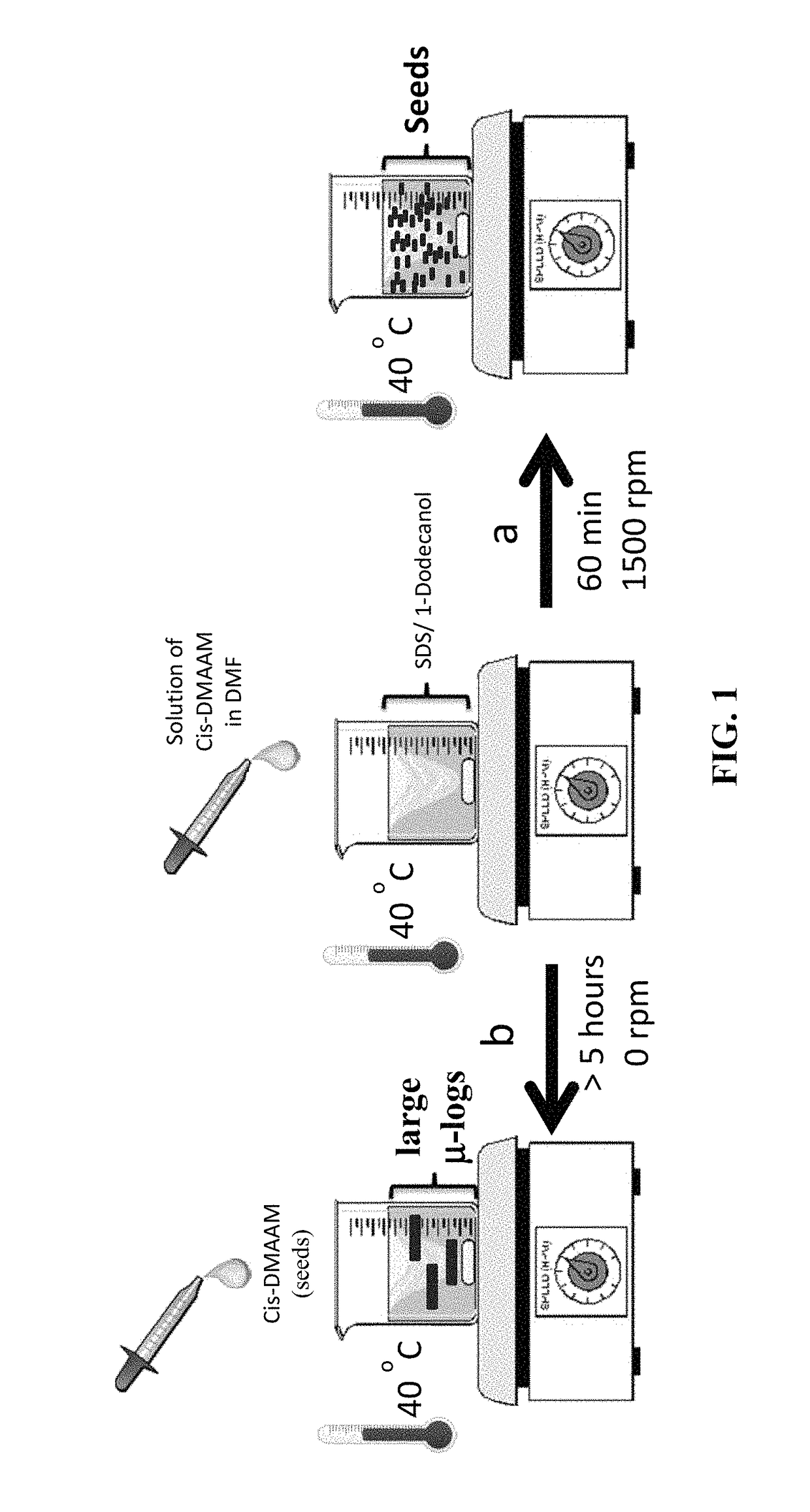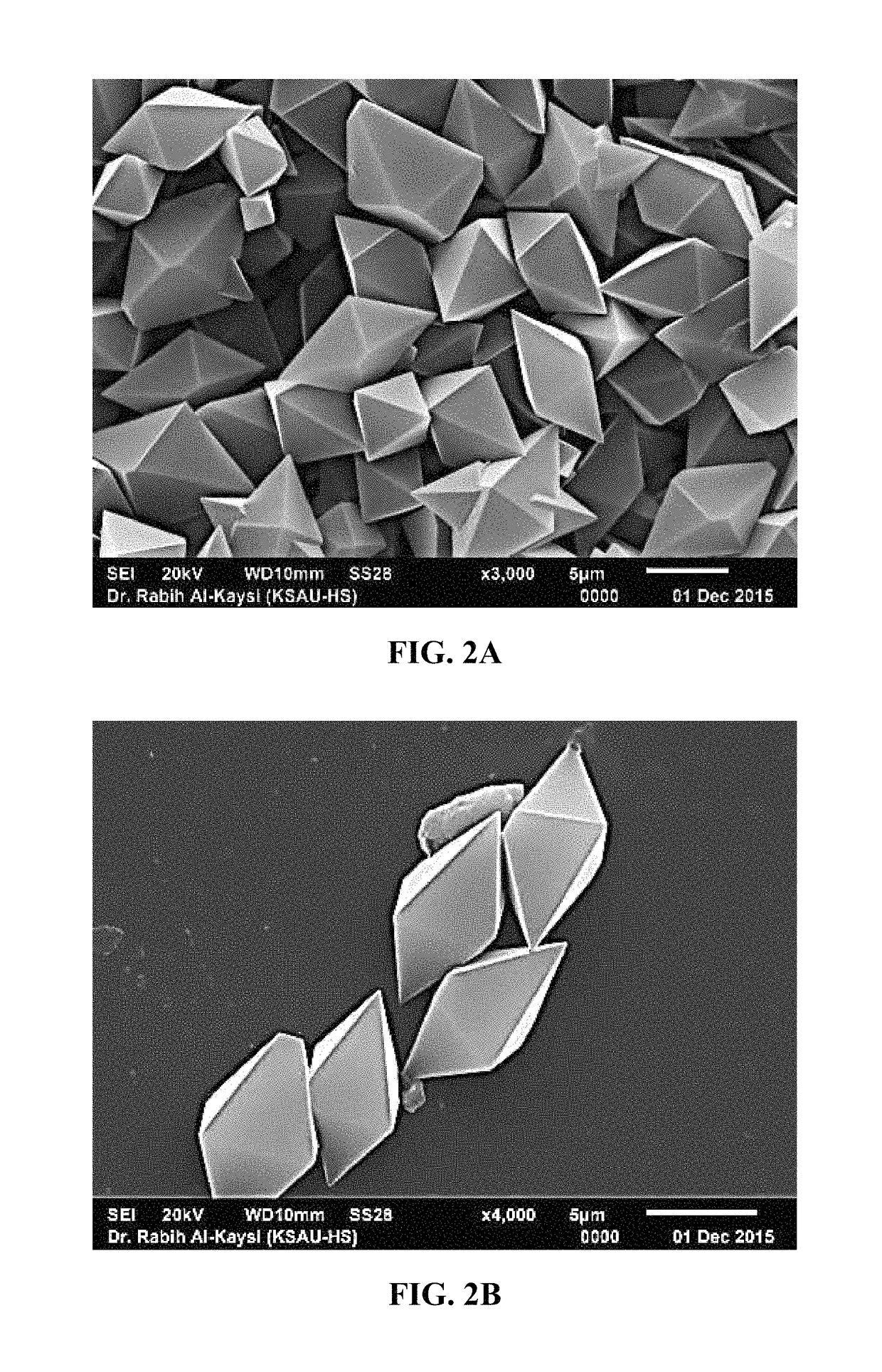Spontaneous peeling of tetragonal microcrystals with short pulses of UV-light
a microcrystal and pulse technology, applied in the field of short pulse exfoliation of microcrystals, can solve the problems of difficult control of process, fracture and loss of crystal integrity,
- Summary
- Abstract
- Description
- Claims
- Application Information
AI Technical Summary
Benefits of technology
Problems solved by technology
Method used
Image
Examples
example 1
[0197]Electrophoresis grade SDS (>98.5%) was purchased from Bio Rad and used without further purification. 1-Dodecanol (98%) was purchased from Sigma Aldrich and used without further purification. N,N-DMF was distilled before use. MILLI-Q water was used for all the experiments and dilutions. Cis-DMAAM (96% cis isomer) was prepared following a previously reported procedure. See Kim, T.; Al-Muhanna, M. K.; Al-Suwaidan, S. D.; Al-Kaysi, R. O.; Bardeen, C. J. Photoinduced Curling of Organic Molecular Crystal Nanowires. Angew. Chemie Int. Ed. 2013, 52, 6889-6893, doi:10.1002 / anie.201302323—incorporated herein by reference in its entirety. To prepare uniform shaped microcrystals, an aqueous solution comprising 0.02 M Sodium Dodecyl Sulfate (SDS) was prepared with varying amounts of 1-dodecanol. A cis-DMAAM solution in distilled N,N-dimethylformamide (0.13 M, 25 μL) was injected into 5 mL of the SDS / 1-dodecanol solution warmed to 40° C. while stirring at 1500 rpm inside a...
example 2
Characterization
[0199]SEM measurements were performed using a JEOL JSM-6510LV scanning electron microscope. Samples were coated with a thin layer of Pt prior to scanning. Optical microscopy studies were performed using an upright OPTIKA brand fluorescence microscope equipped with a 2 MP digital camera. A drop of the cis-DMAAM μ-blocks was deposited over a microscope glass slide then covered with a coverslip. To initiate the photomechanical response, the sample was pulsed with light from a 100 W medium pressure Hg lamp passing through a bandpass (475 nm, 405 nm or 365 nm) filter from Edmund Optics with a full width-half max of 10 nm. A 1 s pulse was enough to cause the μ-blocks to spontaneously peel after 15 to 20 s, regardless of their size.
[0200]HPLC analysis of the photoproducts was performed on peels obtained by pulsing a 5 μL suspension of the μ-blocks in SDS / 1-dodecanol with 405 nm light until the entire sample consisted of peels. The suspension was dissolved in acetonitrile an...
example 3
Results and Discussion
[0201]When cis-DMAAM crystals are grown by slow ethanol / water solvent evaporation, large millimeter size plate-like crystals are obtained that are suitable for single crystal structure determination. When these crystals are exposed to UV light, they develop cracks and undergo fragmentation at the edges as typically seen in large-size photoreactive crystals. This type of photoinduced crystal deterioration is commonly observed in large photoreactive crystals that do not have the ability to relieve strain generated by the photoreaction on the surface. In order to obtain a more useful photomechanical response, a seeded growth procedure in an aqueous solution was used (FIG. 1). The aqueous solution comprises a mixture of sodium dodecyl sulfate (SDS) and 1-dodecanol.
[0202]It was found that varying the concentration of the 1-dodecanol had a dramatic effect on the microcrystal shape. FIGS. 2A-2J show a series of SEM images of cis-DMAAM microcrystals grown at increasing...
PUM
 Login to View More
Login to View More Abstract
Description
Claims
Application Information
 Login to View More
Login to View More - R&D
- Intellectual Property
- Life Sciences
- Materials
- Tech Scout
- Unparalleled Data Quality
- Higher Quality Content
- 60% Fewer Hallucinations
Browse by: Latest US Patents, China's latest patents, Technical Efficacy Thesaurus, Application Domain, Technology Topic, Popular Technical Reports.
© 2025 PatSnap. All rights reserved.Legal|Privacy policy|Modern Slavery Act Transparency Statement|Sitemap|About US| Contact US: help@patsnap.com



